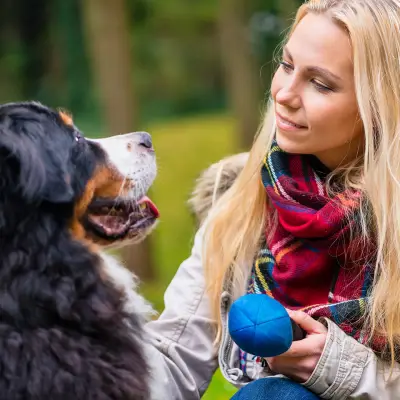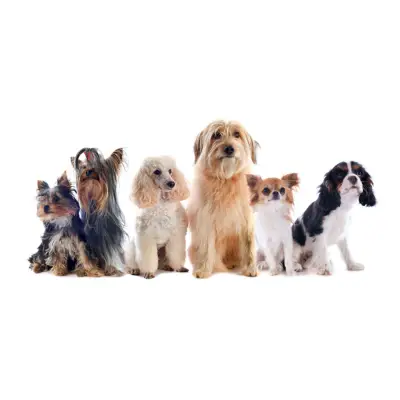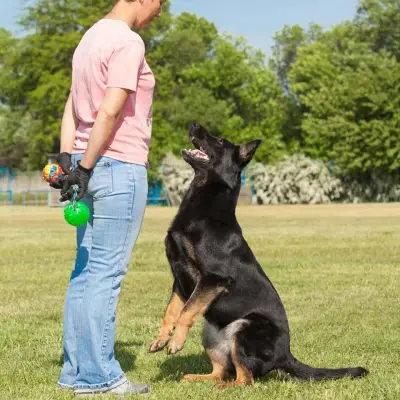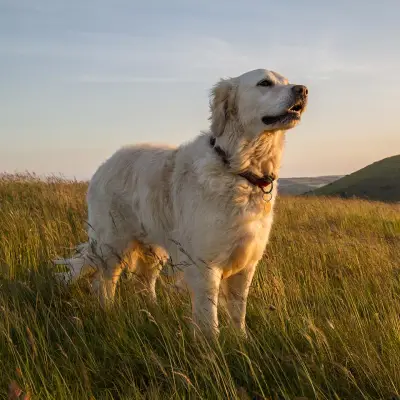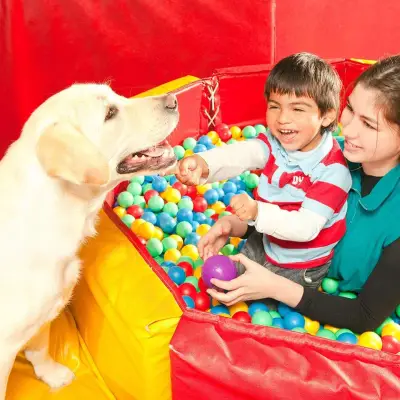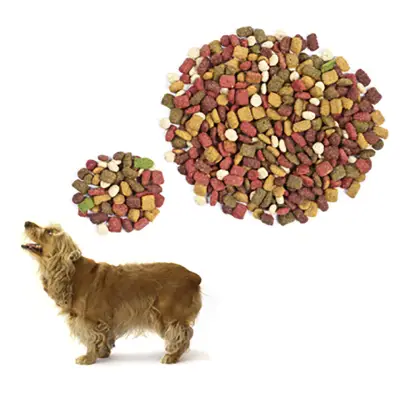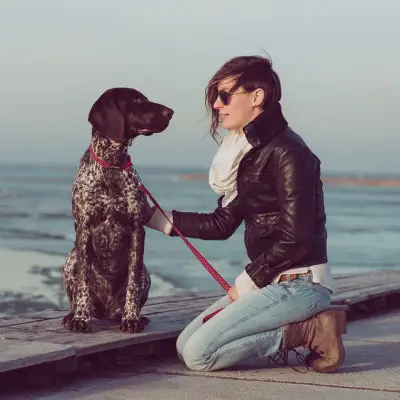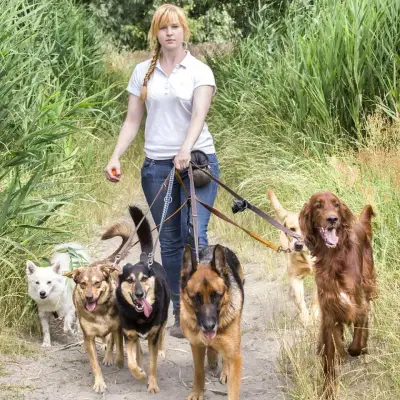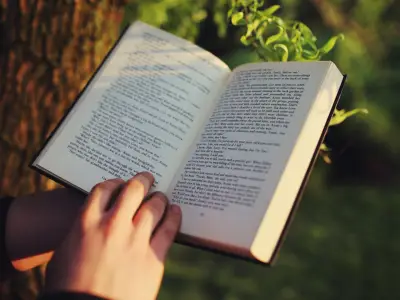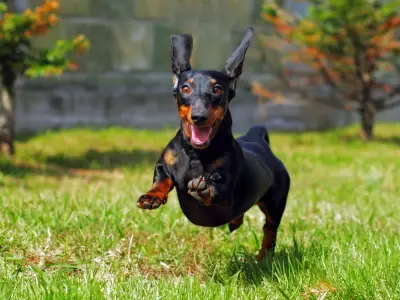Toilet training a puppy is one of the first tasks new dog owners face, and while it can feel daunting, it’s a completely manageable process with the right approach. Whether you’ve just brought home a tiny eight-week-old pup or you’re working with an older dog who’s still having accidents, the principles are the same: patience, consistency, and plenty of positive reinforcement.
This guide is designed to help you teach your puppy where and when to go to the toilet, with seven simple steps and your commonly asked questions answered.
Jump to:
- How to Toilet Train a Puppy: 7 Steps
- Using Puppy Pads
- Teaching Communication
- Managing Setbacks
- Common Myths and Rules
- How Long Does Puppy Potty Training Take?
- What Is the Easiest Dog Breed to Toilet Train?
- Are Girl or Boy Dogs Easier to Potty Train?
- What Is the Hardest Dog to Potty Train?
- Study Our Dog Training Diploma for £29
Recommended for you!
Best SellersHow to Toilet Train a Puppy: 7 Steps
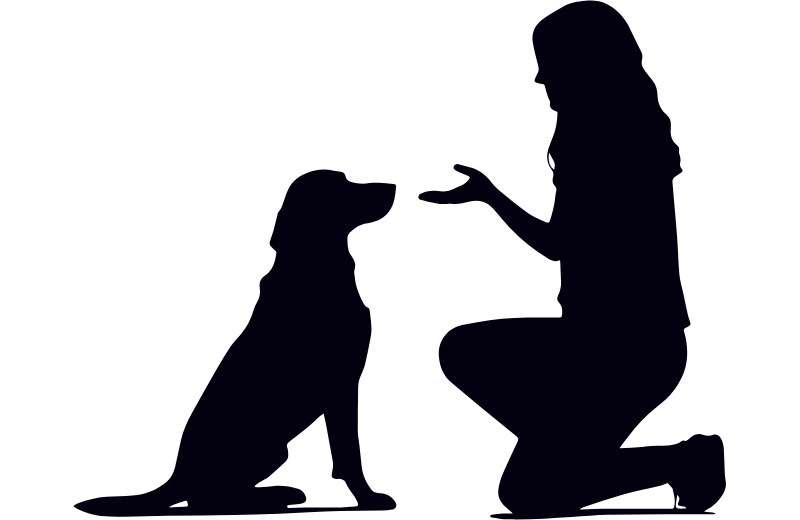
Learn how to toilet-train your puppy with these seven simple steps:
1. Start As Early As Possible
Toilet training should begin from the moment your puppy comes home, usually at around eight weeks old. While very young puppies don’t yet have full control over their bladders, they can still begin to learn where they’re supposed to go. With regular supervision and support, many puppies are well on their way by three to four months, although it can take longer depending on their age, breed, and personality.
Most dogs are considered fully toilet-trained by around six months, but occasional accidents are still normal at this stage. There’s no exact timeline for how long toilet training a puppy takes, but staying consistent with your approach will always speed things along.
2. Stick to a Predictable Routine
Puppies benefit hugely from a clear and consistent routine. Regular toilet breaks throughout the day help prevent accidents and teach your puppy when it’s time to go. Take your puppy outside first thing in the morning, after meals, after naps, after playtime, and just before bed. You should also bring them out every one to two hours during the day, especially when they’re very young.
Set your alarm in the early weeks, as young puppies won’t be able to hold their bladder overnight. A 10-week-old puppy might only manage two to three hours without needing a wee, but this will increase steadily over time.
For the first week or so, you might want to book some time off work, since you’ll be getting up often through the night and monitoring your puppy during the day.
3. Choose a Consistent Toilet Spot
Pick a particular spot in the garden where you want your puppy to do their business. By taking them to the same area every time, they’ll begin to associate the scent with going to the toilet. Use a calm voice and a simple cue like “toilet” or “go on” while they sniff around, then praise them calmly when they finish.
Over time, they’ll learn the purpose of being brought to that area and will be able to go more quickly and confidently.
4. Use Positive Reinforcement
Each time your puppy goes in the right place, offer lots of praise, a treat, or gentle affection. This helps them form a positive connection between toileting outdoors and receiving something rewarding. It’s best to reward them immediately after they finish so the link is clear in their mind.
Positive reinforcement is the most effective and humane method for house training. It also strengthens your bond and builds trust between you and your puppy. There’s no need for scolding or punishment; success comes from guiding your puppy, not correcting them after the fact.
5. Watch Closely Indoors
Keeping an eye on your puppy inside the house is key to preventing accidents. Most puppies show signs they need to go: sniffing the floor, pacing, circling, or suddenly stopping play. When you spot any of these behaviours, calmly bring them outside without delay.
In the early weeks, it’s perfectly fine to carry your puppy out to their toilet spot, especially if time is tight or they seem unsure. This helps prevent messes and gives them a clear opportunity to succeed.
Limit your puppy’s access to rooms where they can’t be supervised, and consider using baby gates or a playpen to keep them close to you. The more control you have over their environment, the more opportunities you have to guide them in the right direction.
6. Understand Your Puppy’s Physical Limits
Young puppies have limited bladder control, especially during the night. A rough rule of thumb is that a puppy can hold their bladder for one hour for every month of age. So a 10-week-old puppy may need a wee every two to three hours. Don’t expect too much too soon; patience is essential.
Some puppies are able to sleep through the night by 12 to 16 weeks, but others take longer. Removing water from the crate a couple of hours before bedtime can help, as long as they’ve had enough to drink during the day.
Using a crate at night can encourage your puppy to hold it in, as dogs typically avoid going where they sleep. Just be sure the crate isn’t too large, or they may pick a corner to go in. With proper use, crate training supports the overall toilet training process.
7. Respond Calmly to Accidents
Accidents are a natural part of toilet training. If your puppy goes in the house, clean it up thoroughly with an enzyme-based cleaner to remove any lingering odour that might attract them back to the same spot. If you catch them mid-wee, gently interrupt with a quiet “outside” and take them to their toilet area. Avoid shouting or scolding; it won’t teach them what to do, and it can lead to fear or anxiety.
If your puppy continues to have frequent accidents at six months or beyond, review your routine, supervision, and frequency of outdoor trips. Some dogs take longer to grasp the idea, especially if they’ve been confused by mixed messages or haven’t had a consistent schedule.
Using Puppy Pads
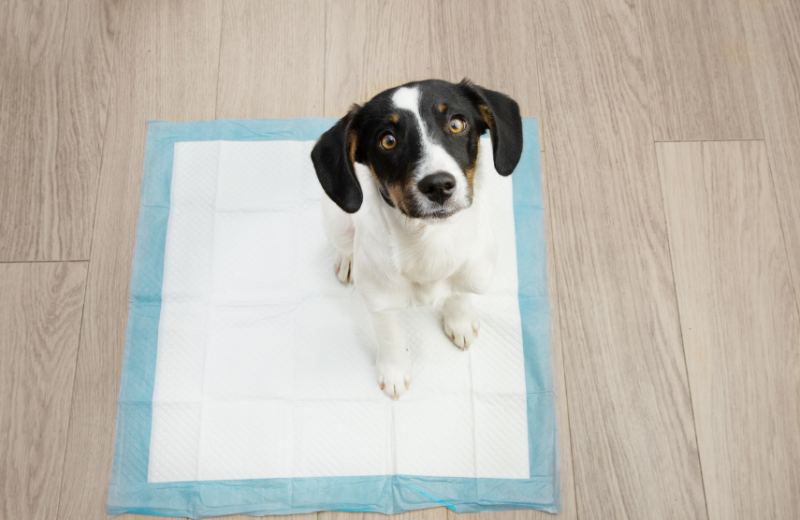
Puppy pads can be useful for flat dwellers or those with limited outdoor access. However, they can sometimes slow progress if a puppy becomes too comfortable going indoors. If you choose to use them, place them in a consistent area, and gradually move them closer to the door. Eventually, you can transition from pads to the garden.
Puppy pads should not be used inside a crate, as this can create confusion and lead to messy habits. Crates are intended to encourage bladder control by providing a clean, safe resting space.
Teaching Communication
Some owners train their puppies to signal when they need to go out, using simple techniques like ringing a bell by the door or sitting near the exit. Repeating the same actions each time helps your puppy make connections between needing to go and being taken outside. Eventually, they’ll learn to get your attention when the urge strikes.
Managing Setbacks
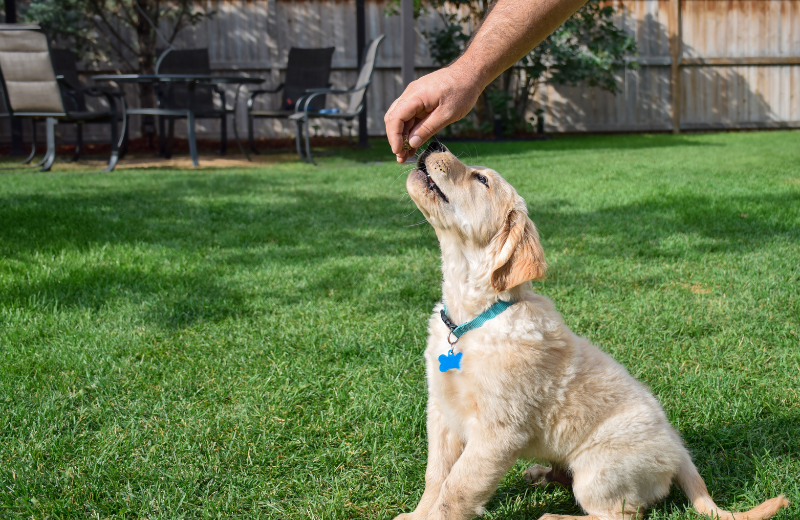
Setbacks can occur during toilet training, especially during teething, routine changes, or after stressful events. These are perfectly normal and not a sign of failure. Simply return to basics: take your puppy out more frequently, supervise closely, and reward successes.
Most puppies are accident-free by six months, but some take longer depending on their background and training history. For adopted or rescued puppies, previous experiences can affect how quickly they learn new habits.
Common Myths and Rules
Some puppy training programmes promote methods like the ‘3-day potty training rule’, which involves intensive supervision over a short period. While these methods can kick-start the process, they don’t replace the need for long-term consistency and practice.
Others refer to the ‘10-10-10 rule’—a rough guide suggesting 10 minutes of training, 10 times a day, over 10 days. This can be a helpful reminder to break training into short, regular sessions, though again, long-term reinforcement remains essential.
How Long Does Puppy Potty Training Take?
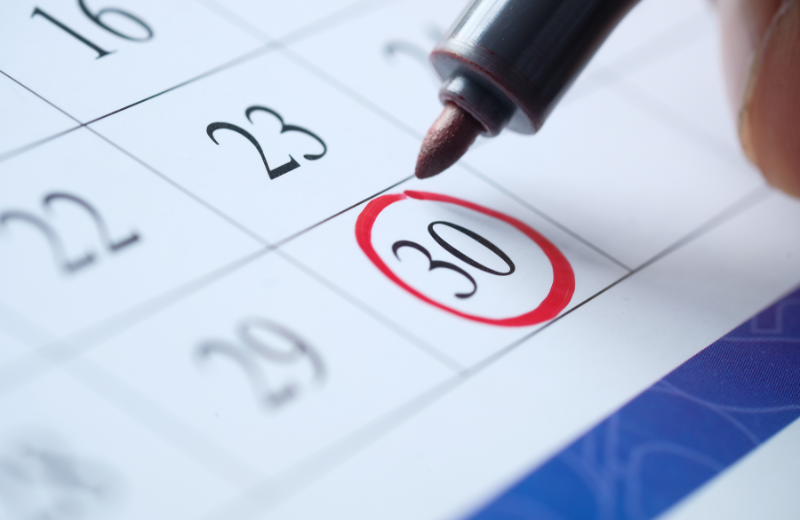
The length of time it takes to fully toilet train a puppy varies from one dog to another, but most will be well on their way within three to six months. Some puppies may catch on in just a few weeks, particularly if they’re slightly older or naturally eager to please, while others may need longer, especially if their routine has been inconsistent.
Puppies under 12 weeks of age don’t yet have strong bladder control, so regular toilet breaks and careful supervision are essential. It's also important to remember that progress isn’t always straightforward; a puppy may have a stretch with no accidents and then suddenly regress. Staying consistent with positive reinforcement and routine helps avoid confusion and supports long-term success.
What Is the Easiest Dog Breed to Toilet Train?
Some dog breeds are generally easier to toilet train than others, particularly those known for their intelligence and desire to please. Breeds like Border Collies, Miniature Schnauzers, Papillons, and Toy Poodles often pick things up quickly and respond well to structure. These dogs tend to enjoy training sessions and are naturally keen to follow guidance from their owners.
That said, ease of training isn’t just about the breed; individual personality plays a big part. A calm, attentive dog of any breed may be easier to train than a more excitable or independent pup. Regardless of breed, consistency, praise, and a clear routine will make the biggest difference.
Recommended for you!
Best SellersAre Girl or Boy Dogs Easier to Potty Train?
There’s a common belief that girl dogs are easier to toilet train, often because they mature slightly earlier than males. While this might give them a bit of a head start, the truth is that both male and female puppies are equally capable of learning good toilet habits.
Success depends more on the puppy’s temperament, the training approach used, and the environment they’re in. Some boy dogs might take a little longer to get the hang of things, especially if they’re more distracted by their surroundings, but with the right support, either sex can learn just as quickly.
What Is the Hardest Dog to Potty Train?
Some breeds have a reputation for being more challenging to toilet train, often because of traits like stubbornness, independence, or low motivation to please. Breeds such as Dachshunds, Basset Hounds, and Afghan Hounds can be a bit trickier, as they might not respond as readily to training or may prefer to do things in their own time.
These dogs often need a bit more patience and creativity from their owners. That doesn’t mean they can’t be trained, only that progress might be slower and require extra consistency and perseverance.
Study Our Dog Training Diploma for £29
If you’re interested in learning more about puppy development, training techniques, and canine behaviour, consider taking the Dog Training Diploma Course with Centre of Excellence. Whether you're a dog owner, aspiring trainer, or simply passionate about canine behaviour, this course offers comprehensive guidance suitable for all levels. And right now, you can enrol for just £29.

